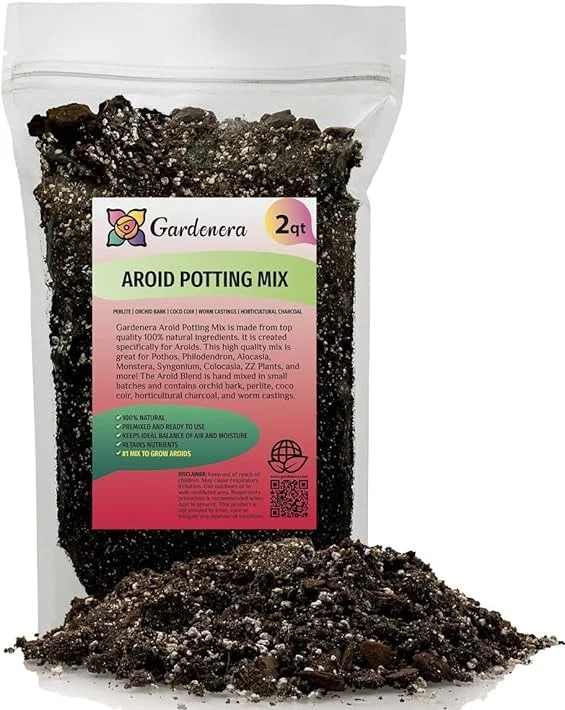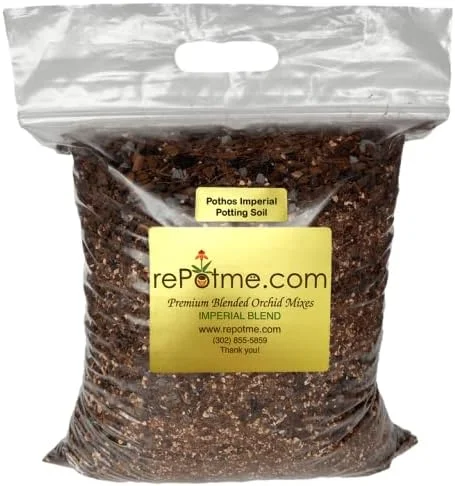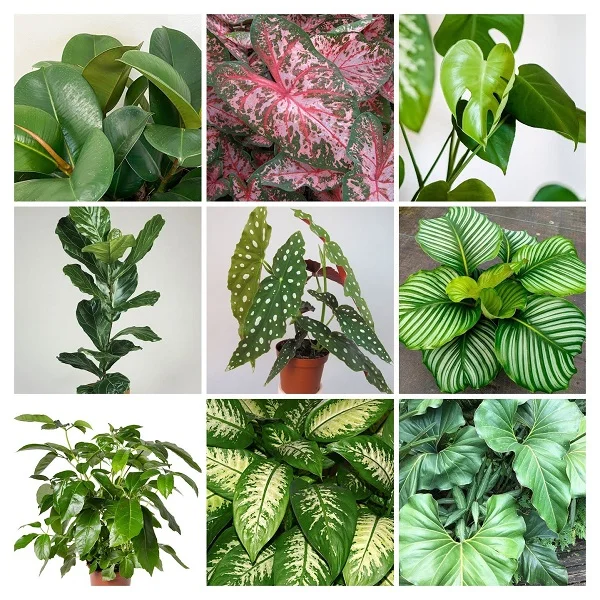12 Reasons Pothos Plant Leaves are Turning Yellow and How to Fix Them
Last updated on
Some links in this post may be affiliate links
Pothos leaves are turning yellow due to poor lighting, incorrect watering, wrong temperatures, improper feeding, poor soil quality, being pot-bound, diseases and pests among others.
Generally, Pothos Plants grow best in medium to bright indirect light, warm and humid conditions and moderately moist, rich, well-drained, Pothos potting soil coupled with monthly feeding in the growing season.
Failure to meet these requirements may cause the Pothos leaves to begin yellowing. Below are 12 causes of Pothos yellow leaves and how to fix them.

12 Causes of Pothos Yellow Leaves and How to Fix Them
1. Poor Lighting
Enough light is required for photosynthesis, the process by which plants make food which is needed for growth and energy. Too little light means that the plant cannot make adequate food for growth and development. This causes the leaves to turn yellow, then brown and eventually die.
Exposure of the Pothos Plant to too bright light will cause the plant to lose the beautiful leaf color, develop yellowish leaves and brown scorch marks.
How to fix itPosition the Pothos Plant in a spot where it will receive medium to bright indirect light. Keep it away from direct sunlight. If the natural lighting is not sufficient you may instal a grow light to supplement it. Take a look at these full spectrum grow lights on Amazon.
Regularly rotate the pot to ensure that the plant absorbs enough light for photosynthesis on all sides to prevent leggy growth. Check out this guide on understanding light for houseplants.
2. Poor Soil Quality
Poor quality soil does not drain easily and will become compacted or soggy which will lead to reduced growth, yellowing of leaves and death of the plant.
How to fix itGrow your Pothos in rich, well-drained soils which will not get soggy while providing the required nutrients. Potting mixes designed for Pothos and those designed for Aroids are perfect for these plants.
3. Too low humidity
Too low humidity means that the air is too dry which will result in reduced growth leading to yellowing of leaves, brown leaf tips and edges, leaf drop and eventual death of the plant if not corrected.
How to fix itPothos have no need for extra humidity. Average room humidity of 50-55% is ideal for these plants. However, where the air is too dry, set the pot on a wet pebble tray or use a cool mist humidifier to raise humidity. You may also grow the plant in a well-lit bathroom, kitchen and other humid areas in the home. Read more on how to increase humidity for houseplants.
4. Root-rot disease
Pothos are prone to root-rot which is prevalent in soggy soil brought about by poor soil drainage. The disease is characterized by wilting, drooping and yellowing leaves and eventual death of the plant.
How to fix itSlip the Pothos Plant out of its pot and inspect the roots. Brown-black mushy roots indicate root-rot, trim them off and treat the healthy roots with a copper-based fungicidal solution as directed by the manufacturer.
Disinfect the pot with the fungicidal solution or use a fresh pot to repot the plant in fresh, well-drained soil. Keep the plant dry for some time before you resume watering.
Ensure that the pot has a drainage hole and that the soil is free-draining to prevent it from getting soggy in the future. Cut down on watering in the cold season as growth is minimal at this time, therefore, the plant does not require a lot of water.

5. Pest infestations
POthos are fairly resistant to pests. However, weak plants can be infested by spidermites and mealybugs. These sap-sucking insects will cause reduced growth, wilting and yellowing of leaves.
How to fix itAlways make sure that the Pothos Plant is healthy at all times by giving it the proper growing conditions. To minimize pest infestations increase the humidity as these pests are prevalent in dry conditions.
Maintain the plant well pruned by removing dead and yellow foliage to minimize pest infestations. Cut the leaves with a clean sharp knife or scissors as close to the base as possible.
Seperate the affected plant from the rest of the plants to reduce spread and treat it with an insecticidal soap or horticultural oil to get rid of the pests. Make sure to follow the manufacturers instructions.
6. Improper feeding
Overfeeding your Pothos will cause the roots to die due to fertilizer burn. When the roots die, they cannot take up nutrients and water required for photosynthesis, thus the leaves begin to turn yellow.
Underfeeding means that the plant is not getting enough nutrients needed for growth, therefore, the leaves turn yellow, brown and eventually they die.
How to fix itFeed your Pothos once a month during the growing season with a balanced, liquid fertilizer. Withhold feeding in the cold season as growth is minimal and feeding at this time can lead to fertilizer burn which is indicated by yellowing and death of the plant.
Flush out accumulated salts from the soil regularly by running a stream of water through the soil until it comes out through the drainage holes. Repeat the process several times to leach out as much as possible of these salts from the soil. Read more on how to feed houseplants.
7. Incorrect watering
Underwatering means that there is too little moisture in the soil for the plant to take up to the leaves for photosynthesis, to make food for growth of the plant. Lack of adequate food for growth and other processes in the plant will cause the plant to begin to die from the leaves which turn yellow, brown and eventually die.
Overwatering results in soggy soil which leads to the death of the roots due to lack of oxygen. When the roots die, the plant cannot take up water and therefore it cannot make food for growth and energy. This results in yellowing leaves and eventual death of the plant if not corrected.
How to fix itWater your Pothos Plant thoroughly during the growing season until water comes out through the drainage holes. Allow the top 2-3 inches of soil to dry out between waterings.
Lessen watering in the cold season as growth is minimal at this time but do not allow the soil to dry out completely for prolonged periods of time. Ascertain that the pot has a drainage hole and that the soil is free-draining to prevent it from getting soggy. Read more on how to water houseplants the right way.

8. Wrong temperatures
Extreme temperatures, either too cold or too hot will reduce growth which will cause the leaves to start turning yellow. Sudden drops in temperature from cold drafts will lead to reduced growth which will cause yellowing and death of the plant. On the other hand, very high temperatures will cause the plant to become dehydrated which causes the leaves to turn yellow and die.
How to fix itKeep your Pothos away from cold drafts from windy windows and doors, air conditioning units and other drafty areas to avoid exposing the plant to extremely low temperatures. Place it away from hot surfaces, heating units, hot stoves and other hot places to avoid extremely high temperatures. Take a look at this guide on understanding temperature for houseplants.
9. Water Quality
Consistently watering Pothos with too cold water will cause plant shock in this tropical plant and lead to reduced growth, yellowing leaves and eventual death of the plant. Pothos are sensitive to salts and chemicals dissolved in water and will respond with brown leaf tips, yellowing and death of the plant.
How to fix itUse room temperature water to water your Pothos. Avoid watering it consistently with too cold water to prevent reduced growth and death of the plant. Water the plant with chlorine-free like rain water or any chlorine-free water that is available to you.
Occasionally, flush out accumulated chemicals (salts) from the soil by running a stream of water through the soil. Allow the stream of water to run for some time and repeat the process several times.
10. Being Pot-bound Plant
If the plant becomes pot-bound the roots fill up the pot and there is very little soil to hold water when the plant is watered. This implies that there is too little soil for the plant to take up to the leaves for photosynthesis. Therefore the plant cannot make enough food for growth and the leaves begin to turn yellow.
How to fix itCheck the bottom of the pot, if a lot of roots are growing through the drainage hole, repot your Pothos into a pot one size larger than the current one. Ensure that the pot has a drainage hole and the that the soil is well-drained. Take a look at these ceramic pots with drainage holes and saucer on Amazon.
11. Repotting shock
Repotting your Pothos may cause it some shock which may lead to some leaves wilting and turning yellow before it can adjust the new growing conditions.
How to fix itTo minimize repotting shock, water the Pothos Plant thoroughly one day before repotting as a well hydrated plant experiences less shock. Avoid making too many changes at once. For instance, after repotting, maintain the plant in the same spot until it is well established before moving it to a new location.
12. Age of the leaves
As the Pothos Plant matures, the older leaves turn yellow and die. Therefore, do not be alarmed, if one or two leaves yellow as this is a natural process.
You liked it? Share on social media.
Related Content
Amazon Associates Disclosure
Homeplantsguide.com is a participant in the Amazon Services LLC Associates Program, an affiliate advertising program designed to provide a means for sites to earn advertising fees by advertising and linking to amazon.com.





